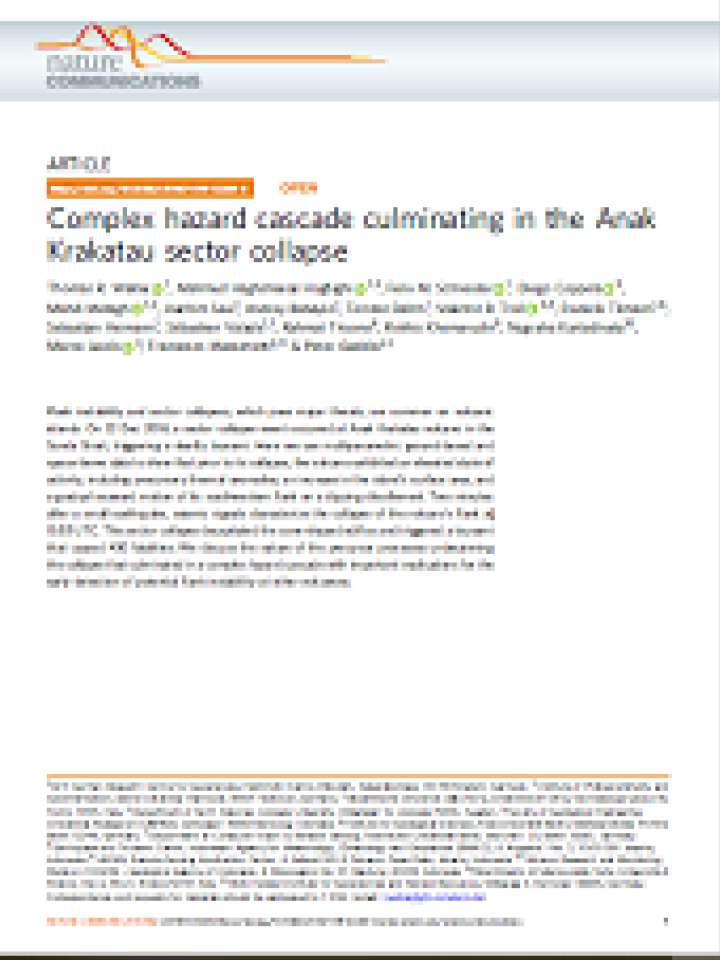Complex hazard cascade culminating in the Anak Krakatau sector collapse
This paper documents flank instability and sector collapses, which pose major threats, and are common on volcanic islands. On 22 Dec 2018, a sector collapse event occurred at Anak Krakatau volcano in the Sunda Strait, triggering a deadly tsunami. Multiparametric ground-based and space-borne data to showed that prior to its collapse, the volcano exhibited an elevated state of activity, including precursory thermal anomalies, an increase in the island’s surface area, and a gradual seaward motion of its southwestern flank on a dipping décollement.
Two minutes after a small earthquake, seismic signals characterize the collapse of the volcano’s flank at 13:55 UTC. This sector collapse decapitated the cone-shaped edifice and triggered a tsunami that caused 430 fatalities. This paper focuses on the nature of the precursor processes underpinning the collapse that culminated in a complex hazard cascade with important implications for the early detection of potential flank instability at other volcanoes.
Explore further
